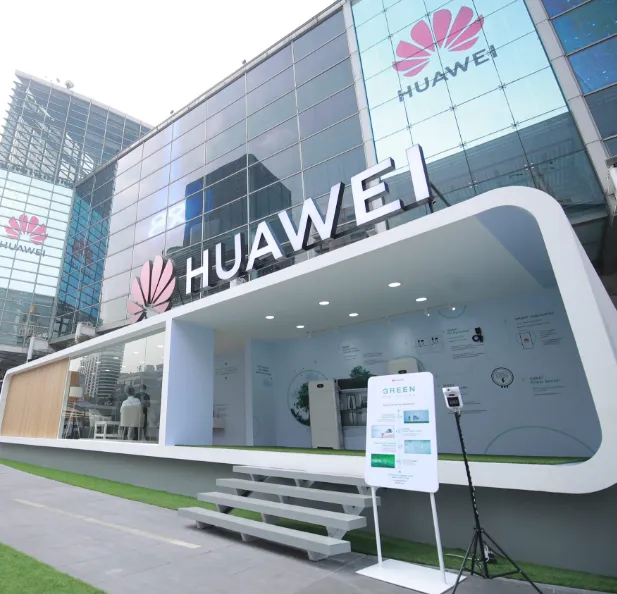Huawei is reshaping the future of AI and cloud computing in Asia Pacific, as evidenced by its recent partner conference in Thailand. Over 400 partners gathered to explore how AI is transforming industries and how businesses can leverage cloud technology to stay competitive. The theme of the event, “Go Together, Grow Together,” highlighted Huawei’s commitment to collaboration and growth in the region.
Jacqueline Shi, Huawei Cloud’s Global Marketing and Sales Lead, emphasized the company’s focus on building strong regional partnerships, especially with governments, financial institutions, telecom companies, and internet service providers. As these sectors accelerate their AI adoption, Huawei Cloud aims to equip them with the necessary tools and services to thrive.
To facilitate this, Huawei has launched a competence center in the region, offering training, technical support, and marketing assistance to help local partners scale quickly and profitably on Huawei Cloud. This initiative is part of a broader effort to strengthen the cloud ecosystem in Asia Pacific.
Huawei Cloud’s Rapid Growth in Asia Pacific
Asia Pacific has emerged as a critical region for Huawei Cloud, with the company experiencing a 30-fold growth in the last five years. Today, Huawei Cloud partners with over 2,500 companies and operates five cloud regions and 18 availability zones, ensuring low-latency coverage across much of the region. In 2024 alone, partner revenue grew by 75%.
Sunny Shang, President of Huawei Cloud Asia Pacific, credited this growth to Huawei’s local-first strategy. He introduced a revamped Partner Sales Acceleration Program, which provides product support, joint development funds, and co-marketing initiatives. The company is also collaborating with partners to develop 50 new industry-specific solutions, as part of its broader mission to drive innovation in key sectors.
Targeting Key Sectors with Industry Solutions
Huawei Cloud also launched the “Industry Deep-Dive Initiative” to focus on three key sectors: internet, finance, and telecommunications. The goal is to build stronger collaboration models within these industries by addressing practical use cases and helping partners deliver tailored solutions.
Joy Huang, overseeing Huawei Cloud’s industry strategy, discussed the growing role of AI across industries. He revealed that Huawei is investing in AI-native infrastructure to support partners and customers in this transformation. This includes expanding the Huawei computing platform, CloudMatrix, and creating custom AI models like Pangu to meet diverse industry needs.
Huawei’s Cloud Computing 2030 report forecasts that by 2030, over 15 million AI-powered robots and more than 3 billion intelligent devices will be connected to the cloud through cloud-device synergy.
AI-Driven Cloud Services for a Smarter Future
Huawei is positioning itself at the intersection of cloud and AI with two approaches: “Cloud for AI” and “AI for Cloud.” The company is building six core capabilities to power this vision: secure and reliable cloud services, global infrastructure with low latency, cloud-native tools, foundational AI models, knowledge-based data tools, and coordination between cloud and connected devices.
Huang also highlighted that Huawei Cloud’s platform experienced no major outages last year, while other cloud providers faced multiple disruptions. With its low-latency network spanning 33 regions and 96 availability zones, Huawei Cloud is designed to meet the demands of complex, AI-driven workloads.
Kubernetes and cloud-native tools like CCE Turbo are playing a crucial role in accelerating AI workload deployments, especially in regulated environments that require precision and efficiency.
Building AI Infrastructure for Future Demands
William Fang, Huawei Cloud’s Chief Product Officer, shared insights into the company’s infrastructure roadmap. He explained how Huawei Cloud is being reengineered to handle the large volumes of data and workloads associated with AI. The platform now supports distributed cloud setups, native AI storage, and hybrid deployments, ensuring that businesses can scale AI solutions effectively.
Fang also discussed how Huawei’s Pangu AI models are being optimized for use cases in product R&D, data security, and operations. New AI computing centers are being established in Asia Pacific to allow local companies to train and deploy AI models without relying on global data centers.
In line with these efforts, Huawei introduced the “APAC AI Pioneer Plan” to accelerate AI adoption across the region by fostering deeper collaboration with ecosystem partners.
A Thriving Partner Ecosystem
Building a robust partner network is central to Huawei Cloud’s growth strategy. According to Ken Kang, who leads Huawei’s global ecosystem division, the company is focused on making it easier for partners to build, test, and sell AI-powered solutions on its platform.
Dale Chen, Director of Partner Development for Huawei Cloud in Asia Pacific, shared that the company’s goals in the region are twofold: strengthening collaborations in key industries and providing better tools for partners to drive sales. This includes targeted marketing, technical account management, and shared resources for sales teams.
Leon Yu, Huawei Cloud’s executive in charge of partner programs, highlighted the steady growth of its ecosystem, which now includes over 45,000 partners and 50,000 developers. The Partner-Customer Engagement program, which links partners with sales leads, generates around 20 million leads each month. Huawei has also bolstered its internal support team with 20,000 digital workers and 1,000 engineers to assist partners with various technical challenges.
Yu also noted the shift in the IT investment landscape. A decade ago, infrastructure services dominated the market, but today, SaaS makes up more than 70% of IT spending—and this trend will likely accelerate with AI.
“We’re not just building products—we’re building an ecosystem grounded in shared goals, technical support, and talent,” he said.
Collaborative Success Stories from Regional Partners
During the conference, regional partners, including AIS, SCash Global, Orange Business, and Chulalongkorn University, shared their success stories in working with Huawei Cloud. These sessions showcased joint development initiatives and how local needs are shaping new, AI-powered products.
Huawei Cloud reaffirmed its commitment to investing in regional partnerships and delivering AI tools and services that address the evolving needs of various industries.
As Huawei Cloud continues to grow its presence in Asia Pacific, the company’s focus on local collaboration, AI infrastructure, and partner success is setting the stage for a more connected and intelligent future in the cloud.







